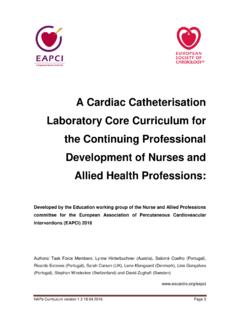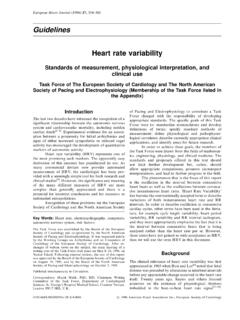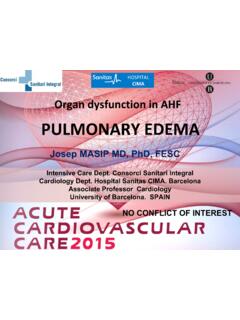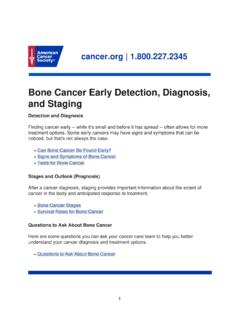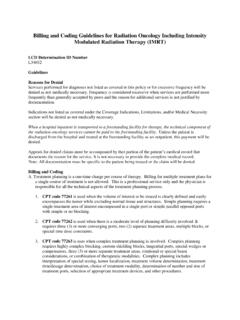Transcription of Lung Ultrasound - European Society of Cardiology
1 Maurizio GalderisiLung Ultrasound Head, Cardiovascular Emergenciesand Onco-HaematologicalComplicationsLaborato ry of Standard and Advanced EchocardiographyFederico II University Hospital Vice President, EACVIC ommunication Officer, ESC Council of Cardio-Oncology Speaker disclosure -I do not have an affiliation (financial or otherwise) with a pharmaceutical, medical device, or communication and event planning company. show the diagnostic capabilities of Lung Ultrasound in Critical illustrate the diagnostic modalities highlight the fields of application. encourage the use of standardized protocols and terminology. Lung Approach in Critical Care Physical examination: insufficientfor fine diagnosis Bedsidechest radiography: limited accuracy Chest computedtomography: risk of transportationand limitedavailability Lung Ultrasound (LUS): Easy available, Low costLung Ultrasound (LUS) In EmergencyWhen LUS can be useful in ER: Pleuralpathology Pericardial pathology Shortness of breath Cianosis Cough Shock Probesfor Lung Ultrasound (LUS)Linear probeConvex probeSector probeLUS approach standardizationThe bluepointsEach point shows a standardizedarea for a given disorderLichtensteinD, Curr Opin CrirCare 2014:20:315-322 PLAPSU pper BPLower BPLongitudinal or TransversalApproachThe longitudinal approach has the advantagesof locatingthe pleural line in all circumstances.
2 Longitudinal scan Transversescan Left Left RightRightHEADFEETR ight of the patientLeft of the patientMasteryof the LUS Blue Protocol (<3 min)Normal lung2DM-modeRibsPleurallineAnterior lung surfaceBatsign Seaand sand signSector probe1. Lung Ultrasound (LUS): The A linesNormal lungPleural lineA linesA linesLinear probeConvex probeTheA lines are horizontalartifactualrepetitionsof the pleural line displayedat regular A profilePLAPS profileVisceralpleuraQuoadsign (2D LUS)Sinusoidsign (M-mode)Lung line towardsthe pleural lineExpiratoryfluid= 13 mm2. Lung Ultrasound (LUS): Pleural EffusionPleuralEffusionPLAPS profileSector mmSinusoidsignM-mode3. Lung Ultrasound (LUS): Lung consolidationPLAPS profileThe C profileMassive consolidationof the wholelower lobewithout areatedlung tissue and no fractalsignMiddle lobeconsolidationnot invadingthe wholelobe, with fractualborderwith aeratedlung 4.
3 LungUltrasound: InterstitialsyndromePulmonary Interstitial Edema is designed by diffuse lung rocketsLung rocketsare defined as at least 3 B lines between two ribsLUSC hestx-rayB linesGround glassrocketscorrelatingwith ground-glassareasSeptal lung rocketscorrelatingwith edematoussubpleuralinterlobularseptaB linesLunginterstitialsyndromeInterstitia lsyndrome: Multiple B linesLung rocketsGlass rockets5. Lung Ultrasound (LUS): PneumotoraxAbolishedlung sliding Stratospheresign Anterior abolishedlung sliding+A lines Lung point at the area at the junctionbetweendead air (pneumothax) and living air (inflatinglung) The A profilePneumotoraxLung point Sector probeLUS 10 (pleural line) (horizontalartifact) (verticalartifact) slidingwith pointTwo more signs, the lung pulse and the dynamic air bronchogram, are used to distinguish atelectasiasfrom pneumonia NORMALEFFUSIONCONSOLIDATIONINTERSTITIALP NEUMOTORAXD iagnosis of Pulmonary EmbolismThe association of A profile with venous thrombosis (venous scan) favours the diagnosis of pulmonary embolism 81% sensitivity 99% specificityThe BLUE Protocol Decision TreeLichtensteinD, Chest 2008.
4 134:117-125 Performance of LUS in the criticalcareLichtensteinD, Curr Opin CrirCare 2014:20:315-322 Accuracy of LUS in the criticalillcompared with ComputedTomographyThe BLUE Protocol combined with simple EchoThe BLUE Protocol applies LUS and venous Ultrasound for simplifiedechocardiography without Doppler can be associated with the BLUE protocol. The BLUE protocol can be adapted to multiple clinical settings:TraumaNeonateAcureRespiratory DistressSyndrome (ARDS)FluidAdministration limited by LUS ProtocolLUS can be used for answeringtwo basic the given patient benefit from fluidtherapy ? administered, when stop fluid? FALLS protocol LichtensteinD, Heart Lung Vessels 2013;5:142-147 Take home messageLung Ultrasound signs, either alone or combined to other point-of-care Ultrasound techniques, are helpful in the diagnostic approach to patients with acute respiratory failure, circulatory shock or cardiac Ultrasound monitoring can be performed at the bedside and used in mechanically ventilated patients, to assess the efficacy of treatments, to monitor the evolution of the respiratory disorder, and to help the weaning Ultrasound can be used for early detection and management of respiratory complications under mechanical ventilation, such as pneumothorax, ventilator-associated pneumonia, atelectasisand pleural Ultrasound is a useful diagnostic and monitoring tool that might become in the next future part of the basic knowledge of physicians taking care of the critically ill patient.






